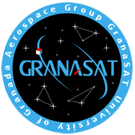Vamos a utilizar un modelo de campo magnético terrestre para poder simular las condiciones magnéticas de los instrumentos y el cubesat dentro del simulador 3D.
El control del campo se realiza a través de un conjunto de bobinas 3D y 3 fuentes de corrientes conectadas a sendas fuentes de tensión digitales que se controlan por USB. (Model KUSB-3116 High Performance Multifunction Data Acquisition USB Module).
Para ello vamos a implementar en MATLAB el modelo IGRF cuya descripción está más abajo.
The accepted model for Earth™ magnetic field is the International Geomagnetic Reference Field, put forth by the International Association of Geomagnetism and Aeronomy (IAGA), and is the central topic of this paper. An overview of this model can be found on the website of the IAGA™s Working Group V-MOD.
The IGRF is essentially a set of Gaussian coefficients, g m n and h m n , that are put forth every 5 years by IAGA for use in a spherical harmonic model. At each of these epoch years, the group considers several proposals and typically adopts a compromise that best fits the data available. The coefficients for a given epoch year are referred to by IGRF and then the year, as in IGRF2000. The model includes both the coefficients for the epoch year and secular variation variables, which track
the change of these coefficients in nanoTessla per year. These secular variation coefficients are used to extrapolate the Gaussian coefficients to the date in question. Once data becomes available about the actual magnetic field for a given epoch year, the model is adjusted and becomes the Definitive Geomagnetic Reference Field, or DGRF. 2
Typically the IGRF consists of 120 coefficients for each epoch year, with 80 secular variation coefficients. However, due to unprecedented geomagnetic data available, the IAGA released a new set of values for IGRF2000 in July 2003 in the 9th-generation IGRF. This new model expanded to increase the precision of the coefficients to one-tenth of a nanoTessla (up from one nanoTessla), and increased the number of coefficients to degree 13 (rather than 10).
{pdf}http://hanspeterschaub.info/Papers/UnderGradStudents/MagneticField.pdf|heigth:600|width:500|app:google{/pdf}
